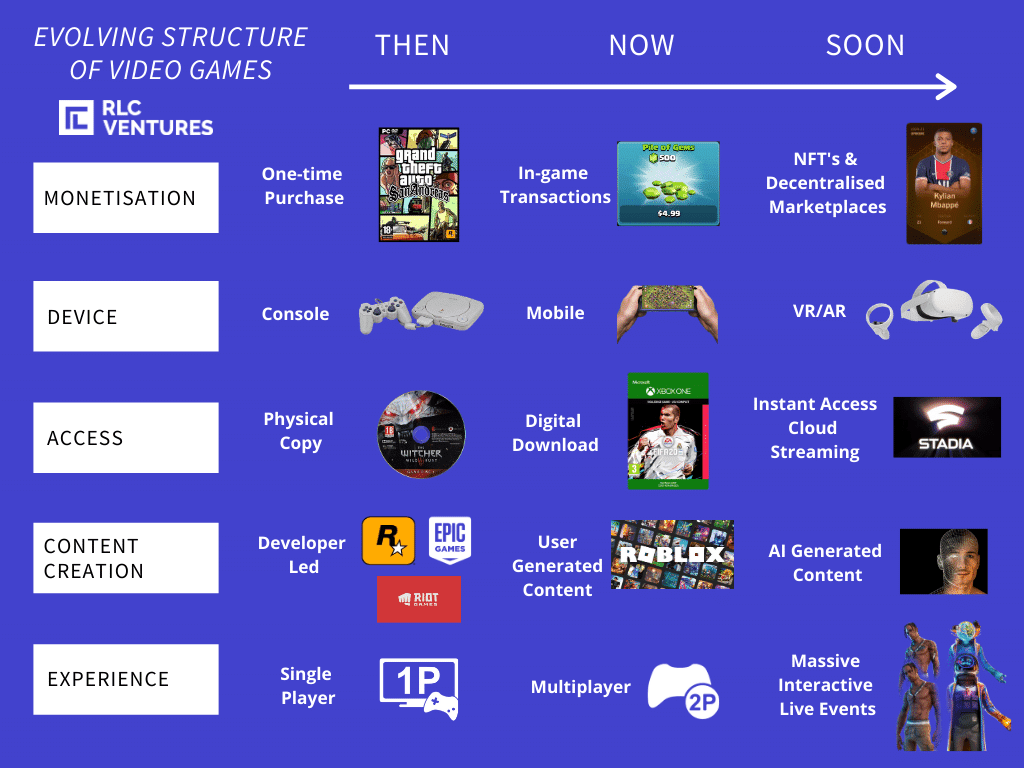Introduction:
The world of video gaming has undergone a transformation that could hardly have been imagined during the days of arcade cabinets and pixelated sprites. Today’s video games offer expansive worlds and immersive experiences that blur the lines between reality and digital fantasy. In this blog, we’ll explore the significant milestones in the evolution of video games, from their humble beginnings in arcades to the sophisticated virtual reality systems of the present day.
The Golden Age of Arcades:
The 1970s and early ’80s marked the golden age of arcade games, a time when titles like “Pac-Man,” “Space Invaders,” and “Donkey Kong” ruled public spaces. These games were not only a test of hand-eye coordination but also a communal activity, where players gathered to challenge each other and chase high scores.

The Rise of Home Gaming Consoles:
The mid-1980s to the 1990s saw the shift from arcade cabinets to home entertainment systems, spearheaded by companies like Nintendo, Sega, and later Sony and Microsoft. The introduction of the Nintendo Entertainment System (NES) and Sega Genesis brought video games into the living room, transforming gaming into a family-oriented activity. This era also introduced iconic franchises such as “Super Mario Bros.” and “Sonic the Hedgehog.”
The Advent of 3D Gaming and Online Expansion:
As technology advanced, so did video games, with the 1990s and early 2000s pioneering 3D gaming. Sony’s PlayStation and Nintendo’s N64 offered gamers their first taste of 3D worlds, with titles like “Tomb Raider” and “The Legend of Zelda: Ocarina of Time” revolutionizing gameplay and storytelling. This period also marked the beginning of online gaming, particularly with the advent of MMORPGs like “World of Warcraft,” which created vast virtual communities.

Modern Gaming and the Shift to VR:
The late 2000s to the present day have been characterized by even more sophisticated graphics, gameplay, and storytelling, with consoles like the PlayStation 4 and Xbox One offering near-cinematic experiences. However, the biggest breakthrough has been the advent of virtual reality. Platforms like Oculus Rift, HTC Vive, and PlayStation VR have introduced gamers to a completely immersive experience, where the digital and real worlds are indistinguishable. VR games such as “Half-Life: Alyx” represent the current pinnacle of immersive gaming, offering environments that react realistically to player actions.
Conclusion:
The journey from flickering screens in dark arcade corners to the vivid, lifelike visuals of VR has been long and filled with technological innovations. As we look to the future, the potential for further transformation in the gaming industry is boundless, with augmented reality and AI set to redefine what it means to play a game. The evolution of video games is not just a testament to advancements in technology but also to the ever-changing ways in which we interact with and shape our entertainment landscapes.